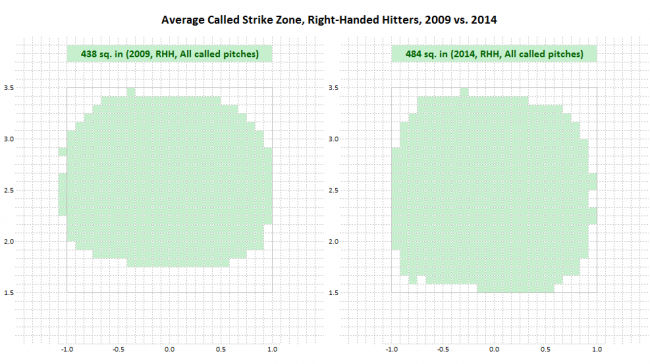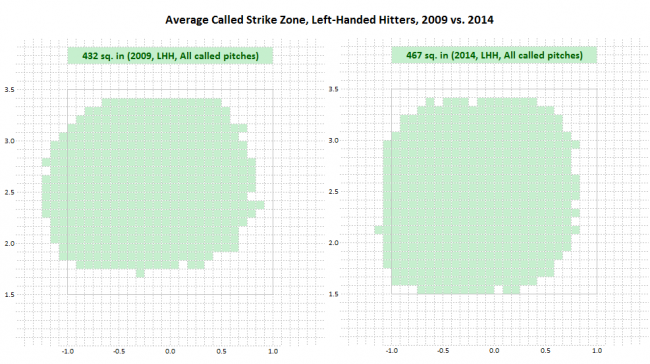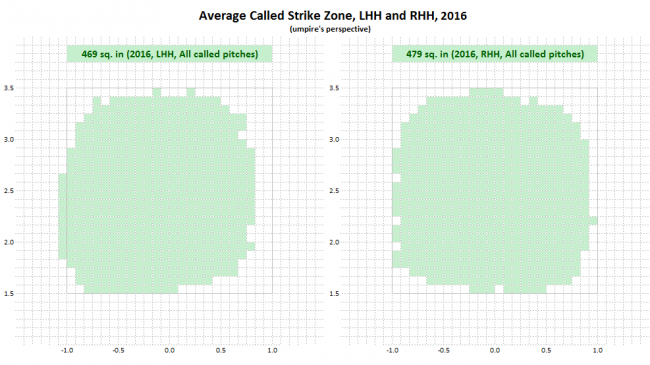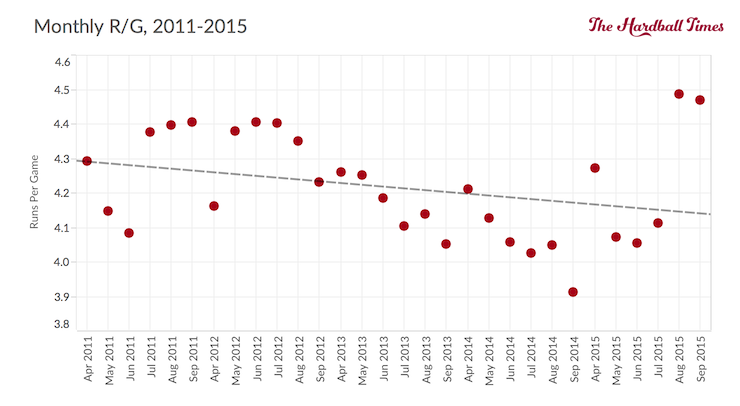© 2025 ALLCITY Network Inc.
All rights reserved.

Ever since Rob Manfred was tapped to be the next commissioner, he has placed an emphasis on injecting additional offense back into the game. Despite his admittedly ironic phrasing of the issue at hand, 2017 could potentially see the first major rule change to try and accomplish such a goal. Back at the MLB Owners Meetings in May, the competition committee voted to raise the bottom of the strike zone from “the hollow beneath the kneecap” to the top of a hitter’s knees. Then, on Monday, ESPN’s Jayson Stark reported that a formal proposal on the matter has been presented to MLBPA.
The idea that a smaller strike zone will improve offense is not just theory. In fact, the expected changes to the zone have precedent. Pitchf/x researcher Jon Roegele has been tracking strike zone changes for years. In a 2014 article for The Hardball Times, Roegele presents us with the following two visuals, where each shaded region represents a square inch that, on average, gets called as a strike more often than not:
If you are curious about why there are shaded areas outside the zone, Roegele has written at length about the tendency for umps to call strikes off the outside edge to lefties. Anyways, Roegele updated his findings for 2016 in a more recent article:
You can see a clear difference between the zone in 2009 and its successors. There has been a clear addition of three inches at the bottom of the zone. Roegele’s research shows that this expansion of the zone began increasing in 2011, which would go a long way in explaining the results of the following graph depicting league-wide scoring trends:
Don’t worry about the sudden uptick in August of 2015 which, while not expressed in this graph, continues through the 2016 season. There are many other factors at play in this power surge, including what some major pundits believe to be a juiced ball. Regardless, those three inches of strike zone make a noticeable difference in the context of the MLB scoring environment.
So now that we have established the fact that runs were suppressed by an expanded strike zone, it’s fair to wonder to what extent scoring will increase with the proposed rule change. In an admittedly rough estimation of the height of my own kneecap (I only use state of the art methodology for my scientific inquiries), I would conclude it is fair to assume the proposed zone changes will approximately cover the same three inches in question in the given research.
Roegele projects an increase of about 0.2 runs per game. August Fagerstrom, who just left Fangraphs for a position with an unspecified major league franchise, calculated that, under the assumption that 50% of previously called strikes in the given area are converted to balls, we will find an increase of 0.18 runs per game.
However, Fagerstrom expresses the difference between a ball and a strike using Dan Meyer’s study, where he concludes .128 runs per pitch. Roegele likely uses framing data at Baseball Prospectus from Dan Brooks and Harry Pavlidis, where the same value is calculated as a difference of .14 runs per pitch. This likely explains the difference between the two projections, allowing us to feel even more confident in what were already similar results.
We will continue our in-depth analysis of this potential major shift in the game with a more team-oriented look in Part 2.
Comments
Share your thoughts
Join the conversation







